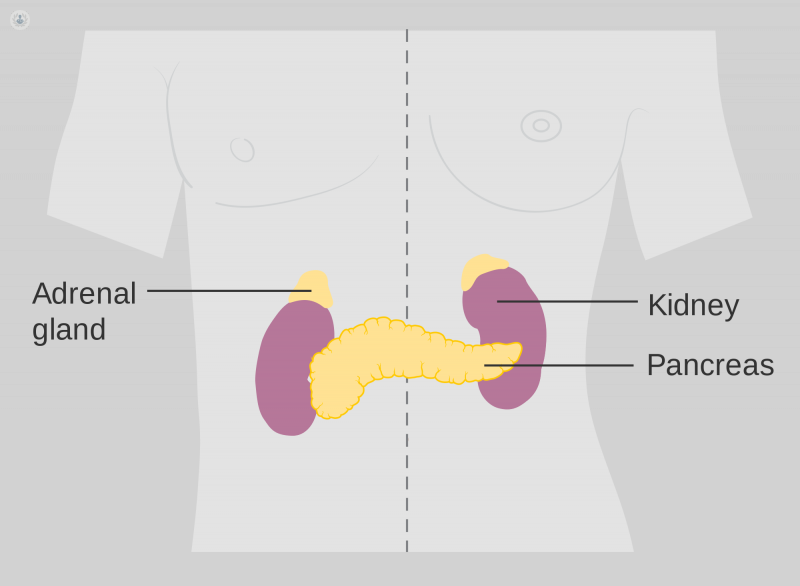Conn's syndrome (Primary aldosteronism)
What is Conn’s syndrome?
Primary hyperaldosteronism/aldosteronism, which is sometimes known as Conn’s syndrome, is a condition where the adrenal gland produces and releases too much aldosterone hormone into the bloodstream. Aldosterone is the hormone that regulates blood pressure and the water-salt metabolism.

Most cases are caused by a benign tumour growing on the adrenal gland. This condition mostly affects people between the ages of 30 and 50 years old.
Hyperaldosteronism can be primary or secondary.
What is the outlook for patients with primary hyperaldosteronism/aldosteronism?
The prognosis for Conn's syndrome tends to be positive with early diagnosis and adequate treatment. If it is not treated properly, it can cause high blood pressure, which can affect multiple organs. Some organs it may affect include; the eyes, the heart, the brain, and the kidneys.
What are the symptoms of Conn's syndrome?
Most primary hyperaldosteronism symptoms are the same as those seen in secondary hyperaldosteronism. They include:
- The main symptom of Conn's syndrome is high blood pressure
- Fatigue
- Low levels of potassium in the blood
- Weak muscles
- Headache
- Numbness
How is Conn's syndrome diagnosed?
After evaluating the symptoms and carrying out a physical exam, the doctor may order the following tests to confirm a diagnosis of primary hyperaldosteronism:
- ECG (electrocardiogram)
- Abdominal CT scan
- Aldosterone and potassium in the blood
- Plasma renin activity (PRA)
- Urinary aldosterone excretion test
- Kidney ultrasound
What causes Conn's syndrome?
Primary hyperaldosteronism is a condition that can be caused by an issue with the adrenal glands producing and releasing excess aldosterone into the bloodstream. There are two known causes of primary hyperaldosteronism:
- In most cases, it is caused by a benign (non-cancerous) tumour on the adrenal gland.
- Both adrenal glands are affected by hyperplasia. It is an excessive proliferation, tumoural and benign, of hormone-producing cells.
The causes of adenoma and hyperplasia remain unknown. There is also a rare type known as glucocorticoid-remediable aldosteronism. It usually appears in childhood. It responds well to glucocorticoid treatment.
How can Conn's syndrome be prevented?
There is no known way to prevent it, but it is advisable to keep blood pressure low. For this, it is important to lead a healthy lifestyle:
- A balanced and healthy diet
- Appropriate weight
- Exercise regularly
- Don’t smoke, and limit alcohol and caffeine intake.
How is Conn's syndrome treated?
Primary hyperaldosteronism is often treated with medication.
In most cases, surgery is needed to remove the adrenal tumour, as this often improves symptoms. After surgery, some patients may still have high blood pressure and need medication for it. Even so, medication doses can often be reduced.
Non-surgical treatment for Conn's syndrome involves reducing salt in the diet and symptom control. This treatment tends to be used in secondary hyperaldosteronism, as surgery is not usually an option for this.
Which specialist should I see for Conn's syndrome?
Primary hyperaldosteronism/aldosteronism is treated by a nephrologist.
